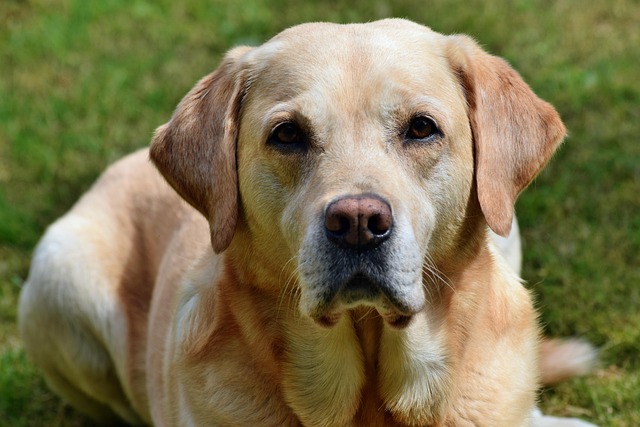
How to wash a dog's head and face?
Washing a dog’s head and face needs gentle hands—most pups get skittish when water nears their eyes or ears, so taking it slow makes all the difference.
I stood in my friend Zoe’s San Diego apartment kitchen last week, watching her 9-month-old Corgi, Luna, dart toward the coffee table—where a handful of grapes had rolled off Zoe’s snack plate. “Luna, stop!” I yelled, snatching the grapes just as her nose touched one. Zoe froze, hands flying to her mouth: “I had no idea grapes were bad! I give her blueberries all the time, but what fruits can dogs not eat? How do I keep her safe?” If you’re a new U.S. dog owner who loves sharing snacks, knowing toxic fruits isn’t just “pet knowledge”—it’s a lifesaver, because some fruits that are healthy for us can harm dogs in tiny amounts.
To understand why some fruits are dangerous for dogs, let’s break down canine biology. Dogs’ kidneys and digestive systems work very differently from humans—substances that our bodies process easily can build up into toxins in theirs. Zoe’s vet, Dr. Marquez, explained that the biggest risks come from fruits with kidney-damaging compounds (like grapes), toxic fats (like avocados), or poisonous seeds/pits (like cherries). Unlike safe fruits (strawberries, blueberries), these don’t just cause an upset stomach—even a single grape or a few avocado slices can lead to organ failure. Scolding a dog for sniffing at toxic fruits (like Zoe almost did when Luna whined for the grapes) violates U.S. animal welfare standards; Luna wasn’t being naughty—she follows her nose, and it’s our job to keep dangerous foods out of her reach, not punish her for curiosity.

Here’s a clear guide to what fruits can dogs not eat, plus how to keep your pup safe—using Zoe’s lesson with Luna: First, the “never-feed” list (memorize these). Grapes and raisins top the list—Dr. Marquez said even 2-3 can trigger acute kidney failure in dogs, with symptoms like vomiting or lethargy. Avocados contain persin, a compound that damages dogs’ digestive tracts (Zoe tossed her avocado toast scraps in the trash instead of the compost, where Luna used to dig). Cherry pits have cyanide (even one cracked pit is risky), and unripe peaches/plums have cyanide in their pits too. Citrus fruits (lemons, limes) aren’t deadly, but their oil irritates dogs’ mouths—Luna once licked a lemon wedge and spent 10 minutes drooling and pawing at her face. Second, what to do if they eat something toxic. If your dog snags a forbidden fruit, watch for 24 hours: symptoms include diarrhea, loss of appetite, or difficulty breathing. Luna didn’t eat any grapes, but Dr. Marquez told Zoe to call the vet immediately if she notices changes—early treatment (like IV fluids for grape poisoning) saves lives. Third, store fruits safely (apartment-friendly hacks). Zoe now keeps toxic fruits in a locked cabinet above the fridge (Luna can’t reach it) and uses a fruit bowl with a lid for safe snacks like blueberries. She also wipes down counters after prepping fruit—no sticky residue or dropped seeds to tempt Luna. Fourth, use safe swaps (reward good behavior). Instead of risky fruits, Zoe gives Luna frozen strawberry chunks as treats. She uses them to train “leave it!”—when Luna ignores the fruit bowl, she gets a strawberry. Positive reinforcement turns safety into a game, and Luna now looks away from the counter on command.
For apartment living, add these rules: Never leave fruit on low tables or open shelves (Luna once stole a peach off the kitchen island). Keep a “toxic fruit list” taped to your fridge—Zoe’s has photos, so guests know what not to share. When walking, carry two essentials: biodegradable poop bags (San Diego fines $200 for leaving messes) and a bag of safe fruit treats—reward your pup for ignoring fallen fruit in the park (great for community etiquette). If you see a neighbor’s dog sniffing at a dropped grape, politely say, “Grapes are toxic for dogs—want a safe strawberry for yours?” Never skip vet checkups: Dr. Marquez updated Luna’s rabies vaccine (mandatory nationwide) and gave Zoe a pet poison hotline sticker for her phone—vets can’t help if you don’t act fast, and proof of core shots is required for emergency care.
Three days later, Zoe texted me a photo: Luna crunching a frozen strawberry, her tail wagging, while the grape bowl sits safely on the high shelf. What fruits can dogs not eat? For Luna, grapes and avocados are off-limits—but safe fruits make snack time just as fun. For your pup, it’s about knowing the risky list, storing fruit smart, and using positive training to keep them away from danger. Your kitchen can be a happy place for both of you—just keep the toxic fruits out of paws’ reach.

Washing a dog’s head and face needs gentle hands—most pups get skittish when water nears their eyes or ears, so taking it slow makes all the difference.

I sat with my friend Jake in his Chicago apartment last Thursday, watching his 1-year-old German Shepherd, Koda, pace back and forth—ears flattened

Mites in dogs often leave subtle clues before things get worse—start by watching for sudden, excessive scratching, especially around the ears, paws, or belly.

I stood in my friend Zoe’s San Diego apartment kitchen last week, watching her 9-month-old Corgi, Luna, dart toward the coffee table—where a handful of grapes had rolled off Zoe’s snack plate.

You might’ve noticed your Cocker Spaniel shaking their head more after a walk in the rain, or your Basset Hound scratching at their ears during playtime.

Walk into any local agility trial on a weekend, and you’ll hear the buzz of handlers cheering their dogs over jumps and through tunnels.